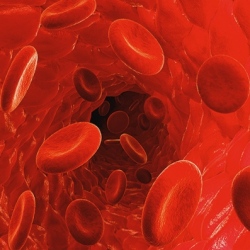
With the capacity to stem severe bleeding within around 20 seconds, the XStat sponge-filled syringe could be a real game-changer when it comes to medical care. It has just proved its worth in the most testing of environments, with battlefield surgeons successfully using the device to plug a soldier’s gunshot wound for the first time.
The syringe, which was first approved for battlefield use in 2014, works by filling a wound with small cellulose sponges. These are made from wood pulp and covered in chitosan, an antimicrobial compound found in crustacean shells. This not only fights off bacteria, but also causes blood clotting that combines with the expanding sponges to apply pressure and quickly stop arterial bleeding.
When a coalition forces soldier received a gunshot wound to the left thigh, opening up the femoral artery and vein to leave a gaping cavity, doctors were unable to stem the residual bleeding even after around seven hours of surgery.
The team then called on the XStat syringe to fill the wound, applying a single syringe to the cavity which almost immediately stopped the flow of blood. The soldier then became stable and was moved to a definitive care facility.
"The first-in-human experience with XStat is the culmination of tremendous effort on the part of both RevMedx and our military collaborators," says Andrew Barofsky, president and CEO of RevMedx. "We are pleased to see XStat play a critical role in saving a patient’s life and hope to see significant advancement toward further adoption of XStat as a standard of care for severe hemorrhage in pre-hospital settings."
The civilian version of the syringe, called XStat 30, was cleared by the FDA for use by the general population in December last year. Because the dressing can be used for up to four hours and contains x-ray detectable markers for surgical removal later on, it is hoped first responders can use it to limit civilian deaths that result from haemorrhaging before they reach the hospital.
